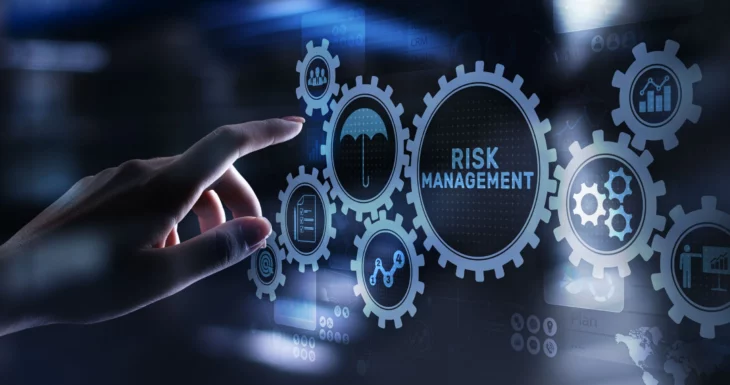
- 0 Comments
Cybersecurity risk management is a critical process for organizations to identify, assess, and mitigate potential threats to their digital assets. Vulnerability management, coupled with the NIST Cybersecurity Framework (CSF) 2.0, provides a robust framework for managing cyber risks effectively.
Vulnerability management
Vulnerability management involves identifying, prioritizing, and remediating security vulnerabilities in systems and networks. This process encompasses continuous vulnerability scanning, assessment, and patching to address weaknesses before they can be exploited by attackers. By implementing a proactive vulnerability management program, organizations can reduce their exposure to cyber threats and enhance their overall security posture.
The NIST CSF 2.0 is a widely recognized framework that provides guidelines and best practices for improving cybersecurity risk management. It consists of five core functions: Identify, Protect, Detect, Respond, and Recover. These functions help organizations establish a systematic approach to managing cybersecurity risks by aligning with business objectives and regulatory requirements.
Integration of vulnerability management with the NIST CSF 2.0 enhances cyber risk management efforts. The “Identify” function helps organizations understand their vulnerabilities and prioritize them based on potential impact. Vulnerability scanning and assessment tools provide valuable insights into the organization’s assets and potential weaknesses, supporting the identification process.
The “Protect” function emphasizes implementing safeguards to mitigate cybersecurity risks. Vulnerability management plays a crucial role in this function by identifying vulnerabilities and applying patches or other mitigating controls to protect against potential exploits. It ensures that critical assets are adequately protected from known vulnerabilities.
Mitigating cybersecurity risks
The “Detect” function focuses on identifying cybersecurity events promptly. Vulnerability management enhances this function by continuously scanning and monitoring for new vulnerabilities and potential threats. Early detection of vulnerabilities allows organizations to take proactive measures to prevent potential breaches or attacks.
The “Respond” function involves developing and implementing response plans to address cybersecurity incidents effectively. Vulnerability management provides valuable data to support incident response efforts, such as identifying the root cause of security incidents and applying patches or updates to mitigate further risks.
Finally, the “Recover” function emphasizes restoring capabilities and services affected by cybersecurity incidents. Vulnerability management contributes to this function by ensuring that systems and networks are promptly patched and restored to a secure state following a security breach or incident.
Integrating vulnerability management with the NIST CSF 2.0 provides organizations with a comprehensive framework for managing cybersecurity risks effectively. By identifying vulnerabilities, implementing protective measures, detecting potential threats, responding to incidents, and recovering from breaches, organizations can strengthen their cybersecurity posture and mitigate the impact of cyber threats.
In today’s digital age, cyber risk mitigation has become a critical component of organizational risk management strategies. As cyber threats continue to evolve in complexity and frequency, businesses must implement robust measures to protect their digital assets, ensure data integrity, and maintain operational resilience. This comprehensive approach involves understanding the landscape of cyber threats, developing proactive defense mechanisms, and fostering a culture of cybersecurity awareness.
Cyber Threat Landscape
Cyber threats come in many forms, including malware, ransomware, phishing attacks, and advanced persistent threats (APTs). Each of these threats can have devastating impacts on an organization, ranging from data breaches and financial losses to reputational damage and regulatory penalties. To effectively mitigate these risks, it’s essential to first understand the nature and potential impact of these threats.
Proactive Defense Mechanisms
1. Implementing Robust Firewalls and Intrusion Detection Systems (IDS)
Firewalls act as a barrier between trusted internal networks and untrusted external networks, monitoring and controlling incoming and outgoing network traffic based on predetermined security rules. IDS, on the other hand, monitors network traffic for suspicious activity and potential threats. Together, these tools form the first line of defense against cyber attacks.
2. Regular Software Updates and Patch Management
Ensuring that all software, including operating systems and applications, is up-to-date is crucial. Software updates and patches often include fixes for security vulnerabilities that cybercriminals can exploit. A robust patch management process helps in maintaining the security posture of the organization.
3. Encryption of Sensitive Data
Encrypting sensitive data, both in transit and at rest, ensures that even if data is intercepted or accessed by unauthorized individuals, it remains unreadable and unusable. Strong encryption protocols are essential for protecting confidential information from cyber threats.
4. Multi-Factor Authentication (MFA)
MFA adds an extra layer of security by requiring users to provide two or more verification factors to gain access to resources. This makes it significantly more challenging for attackers to gain unauthorized access to systems and data, even if they have obtained a user’s credentials.
5. Regular Security Audits and Penetration Testing
Conducting regular security audits and penetration tests helps identify and address vulnerabilities before they can be exploited by cybercriminals. These assessments provide valuable insights into the effectiveness of existing security measures and highlight areas that require improvement.
Fostering a Culture of Cybersecurity Awareness
1. Employee Training and Awareness Programs
Human error remains one of the leading causes of security breaches. Regular training programs that educate employees about the latest cyber threats, safe online practices, and the importance of following security protocols can significantly reduce the risk of cyber incidents. Employees should be encouraged to report suspicious activities and potential security issues promptly.
2. Establishing Clear Cybersecurity Policies
Organizations should develop and enforce comprehensive cybersecurity policies that outline the acceptable use of technology, data protection practices, and incident response procedures. These policies should be communicated clearly to all employees and regularly reviewed to ensure they remain relevant and effective.
3. Creating an Incident Response Plan
Despite best efforts, cyber incidents can still occur. Having a well-defined incident response plan in place ensures that the organization can respond swiftly and effectively to minimize damage. This plan should include procedures for identifying, containing, eradicating, and recovering from cyber incidents, as well as communication protocols for informing stakeholders and regulatory bodies.
Leveraging Advanced Technologies
1. Artificial Intelligence (AI) and Machine Learning (ML)
AI and ML technologies can enhance cybersecurity efforts by detecting anomalies and potential threats in real-time. These technologies can analyze vast amounts of data and identify patterns that may indicate malicious activity, enabling faster and more accurate threat detection and response.
2. Blockchain Technology
Blockchain’s decentralized and immutable nature makes it a valuable tool for enhancing cybersecurity. It can be used to secure transactions, protect data integrity, and ensure the authenticity of digital identities. Implementing blockchain technology can help prevent data tampering and unauthorized access.
Cyber risk mitigation
Cyber risk mitigation is an ongoing process that requires a multifaceted approach. By understanding the threat landscape, implementing proactive defense mechanisms, fostering a culture of cybersecurity awareness, and leveraging advanced technologies, organizations can significantly reduce their vulnerability to cyber threats. As cybercriminals continue to develop new tactics and techniques, it is imperative for businesses to remain vigilant and adaptive, continuously improving their cybersecurity measures to safeguard their digital assets and maintain the trust of their stakeholders.

